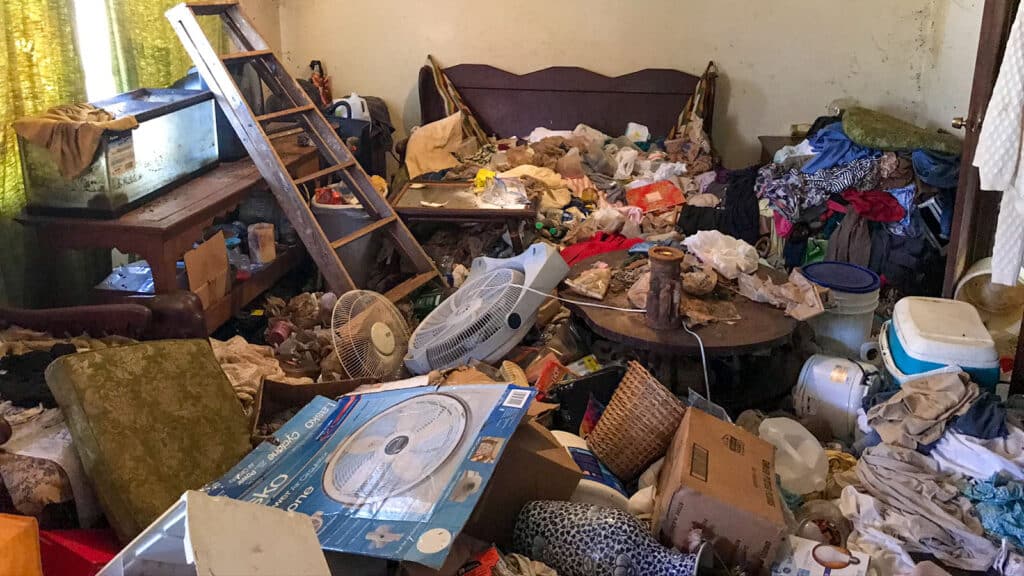Unveiling the Pitfalls: Common Mistakes in Hoarding Cleanup
Unveiling the Pitfalls: Common Mistakes in Hoarding Cleanup! Hoarding is a complex psychological disorder characterized by the excessive accumulation of belongings, often resulting in cluttered and unsafe living conditions. Cleaning up a hoarding situation requires sensitivity, patience, and careful planning. However, there are common mistakes that can hinder the cleanup process and potentially exacerbate the hoarder’s distress. In this blog post, we’ll explore these pitfalls and provide guidance on how to navigate them effectively.
PRO TIP: Discover specialized services like wood floor cleaning, junk removal, power washing, and tile cleaning, provided by Cleaning World Inc. Visit our official website to delve into these offerings. Your satisfaction is our main concern, and we’re eager to deliver top-notch service to you.
Understanding Hoarding Disorder
Before delving into the pitfalls of hoarding cleanup, it’s essential to understand the nature of hoarding disorder. Hoarding is not simply a matter of being messy or disorganized; it is a mental health condition that involves difficulty discarding possessions, regardless of their value. Hoarders often experience intense anxiety or distress at the thought of parting with their belongings, leading to excessive accumulation and clutter.
Hoarding can have serious consequences for both the hoarder and their living environment. Cluttered homes pose safety hazards such as fire risk, tripping hazards, and unsanitary conditions. Hoarding can also strain relationships, impact mental health, and interfere with daily functioning. Keep reading to learn more about the common mistakes of hoarding cleanup.
Failure to Address the Underlying Issues
One of the most significant mistakes in hoarding cleanup is focusing solely on removing clutter without addressing the underlying psychological factors contributing to the hoarding behavior. Hoarding is often a symptom of deeper emotional issues such as anxiety, depression, trauma, or obsessive-compulsive disorder (OCD). Without addressing these underlying issues, the hoarding behavior is likely to persist even after the clutter is removed.
Lack of Sensitivity and Empathy
Hoarding cleanup requires a compassionate and non-judgmental approach. Hoarders may feel embarrassed, ashamed, or defensive about their living conditions, and insensitive remarks or actions can exacerbate their distress. It’s essential to approach the cleanup process with empathy, understanding, and respect for the hoarder’s feelings and autonomy.
Rushing the Cleanup Process
Hoarding cleanup is a time-consuming and challenging undertaking that requires careful planning and execution. Rushing the process can lead to incomplete or ineffective results, as well as increased stress and anxiety for the hoarder. It’s important to approach hoarding cleanup with patience and persistence, allowing ample time for sorting, organizing, and decision-making.
Overwhelming the Hoarder
The prospect of decluttering an entire home can be overwhelming for hoarders, especially if they have been living with clutter for an extended period. Pressuring the hoarder to make quick decisions or attempting to tackle too much clutter at once can trigger anxiety and resistance. Instead, it’s essential to break the cleanup process into manageable steps and provide support and encouragement along the way.
Ignoring Safety Hazards
Hoarding environments often pose significant safety hazards, including fire risk, structural instability, and unsanitary conditions. Ignoring these hazards or failing to prioritize safety during cleanup can lead to accidents, injuries, or property damage. It’s crucial to assess the safety risks associated with the hoarding situation and take appropriate measures to mitigate them before beginning cleanup.
Disregarding the Hoarder’s Preferences
Hoarders may have strong attachments to their belongings, even if others perceive them as worthless or unimportant. Disregarding the hoarder’s preferences or forcibly removing items without their consent can undermine trust and worsen their distress. Instead, involve the hoarder in the decision-making process, respect their boundaries, and prioritize preserving items that hold sentimental value.
Failing to Address Clutter Patterns
Simply removing clutter from a hoarding environment is unlikely to address the underlying hoarding behavior. Without addressing the root causes of hoarding and implementing strategies to prevent future clutter accumulation, the problem is likely to recur. It’s essential to work with the hoarder to identify and address the underlying triggers and patterns contributing to their hoarding behavior.
Navigating Hoarding Cleanup Successfully
While hoarding cleanup presents numerous challenges, it is possible to navigate the process successfully with the right approach and support. Here are some tips for avoiding common pitfalls and promoting a successful hoarding cleanup:
Educate Yourself
Take the time to educate yourself about hoarding disorder, including its causes, symptoms, and treatment options. Understanding the nature of hoarding can help you approach the cleanup process with empathy and compassion.
Seek Professional Help
Consider enlisting the support of mental health professionals, hoarding cleanup specialists, or professional organizers with experience in hoarding disorder. These professionals can provide guidance, support, and expertise throughout the cleanup process.
Take a Collaborative Approach
Involve the hoarder in the cleanup process as much as possible, respecting their autonomy and preferences. Collaborate with them to develop a plan for decluttering, sorting, and organizing their belongings, taking into account their emotional attachment to certain items.
Prioritize Safety
Prioritize safety during hoarding cleanup, identifying and addressing potential hazards such as fire risk, structural instability, and unsanitary conditions. Take appropriate precautions to protect yourself and others from harm, including wearing protective gear and following proper disposal procedures.
Focus on Progress, Not Perfection
Hoarding cleanup is a gradual and iterative process that may take time to complete. Celebrate small victories and progress along the way, rather than focusing solely on achieving a perfect outcome. Recognize that change takes time and be patient with yourself and the hoarder throughout the cleanup journey.
Provide Ongoing Support
Hoarding recovery is a journey that requires ongoing support and encouragement. Continue to support the hoarder in maintaining a clutter-free environment, addressing underlying issues, and developing healthy coping strategies for managing their hoarding tendencies.
Why Seek Professional Help as a Hoarder
Living with hoarding disorder can be overwhelming and isolating, but it’s essential to know that you’re not alone and that help is available. While the thought of seeking professional assistance may seem daunting, it can be a crucial step toward reclaiming your life and creating a safer, healthier environment. Here are several reasons why seeking professional help as a hoarder is beneficial:

Expertise and Experience
Professional organizers, therapists, and hoarding cleanup specialists have specialized training and experience in working with individuals affected by hoarding disorder. They understand the unique challenges and complexities of hoarding behavior and can offer tailored support and guidance to help you navigate the recovery process effectively.
Non-Judgmental Support
Hoarding is often accompanied by feelings of shame, embarrassment, and self-criticism. Professional helpers provide a safe and non-judgmental space where you can openly discuss your struggles, fears, and goals without fear of stigma or condemnation. They approach hoarding with empathy, understanding, and respect, helping to alleviate feelings of isolation and shame.
PRO TIP: Cleaning World Inc: Enhance efficiency by bundling services, including heavy-duty house cleaning, flood cleanup, cleanouts service, and disinfecting services. Visit us at 209 Holt St, Hackensack, NJ 07601.
Individualized Treatment
There is no one-size-fits-all approach to treating hoarding disorder, as each person’s experience with hoarding is unique. Professional helpers collaborate with you to develop a personalized treatment plan tailored to your specific needs, preferences, and goals. Whether you require therapy, medication, organizational assistance, or a combination of approaches, professional helpers can provide the support and resources you need to make meaningful progress.
Accountability and Motivation
Making lasting changes to hoarding behavior requires dedication, persistence, and accountability. Professional helpers serve as supportive allies and accountability partners, helping you stay motivated and focused on your goals throughout the recovery journey. They provide encouragement, feedback, and practical strategies to help you overcome obstacles and maintain momentum.
Access to Resources and Support Networks
Professional helpers have access to a wealth of resources and support networks that can enhance your recovery journey. They can connect you with community resources, support groups, and peer networks where you can find validation, encouragement, and camaraderie with others who understand what you’re going through. These resources can provide valuable support and inspiration as you work toward recovery.
Holistic Approach
Hoarding disorder often coexists with other mental health conditions such as depression, anxiety, or trauma. Professional helpers take a holistic approach to treatment, addressing the underlying psychological, emotional, and environmental factors contributing to hoarding behavior. By addressing these factors comprehensively, professional helpers can help you achieve long-lasting recovery and improve your overall well-being.
Safety and Well-being
Hoarding environments can pose significant safety hazards, including fire risk, tripping hazards, and unsanitary conditions. Professional helpers prioritize your safety and well-being, assessing and addressing safety risks associated with hoarding behavior. They can help you create a safer, healthier living environment that promotes your physical and emotional health.
Unveiling the Pitfalls: Common Mistakes in Hoarding Cleanup
Hoarding cleanup is a complex and challenging process that requires sensitivity, patience, and careful planning. By avoiding common pitfalls such as neglecting the underlying issues, rushing the cleanup process, and disregarding the hoarder’s preferences, it’s possible to navigate hoarding cleanup successfully and promote positive outcomes. With the right approach, support, and resources, individuals affected by hoarding disorder can reclaim their living spaces and embark on a path toward healing and recovery. If you or a family member needs professional hoarding services, contact Cleaning World for all your hoarding needs. With tailored experiences for each person, you can expect a soft and helpful approach.





